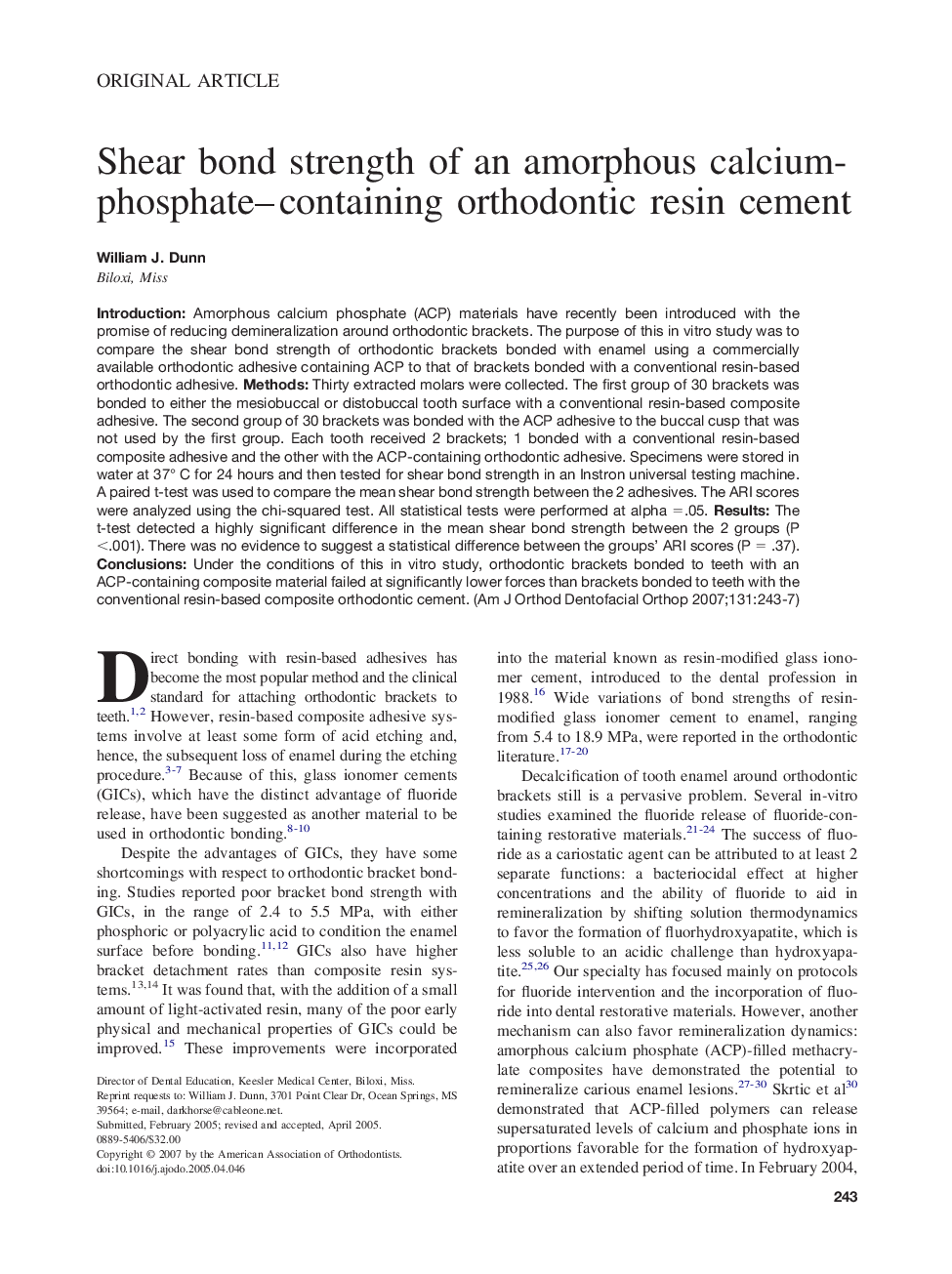| Article ID | Journal | Published Year | Pages | File Type |
|---|---|---|---|---|
| 3119306 | American Journal of Orthodontics and Dentofacial Orthopedics | 2007 | 5 Pages |
Introduction: Amorphous calcium phosphate (ACP) materials have recently been introduced with the promise of reducing demineralization around orthodontic brackets. The purpose of this in vitro study was to compare the shear bond strength of orthodontic brackets bonded with enamel using a commercially available orthodontic adhesive containing ACP to that of brackets bonded with a conventional resin-based orthodontic adhesive. Methods: Thirty extracted molars were collected. The first group of 30 brackets was bonded to either the mesiobuccal or distobuccal tooth surface with a conventional resin-based composite adhesive. The second group of 30 brackets was bonded with the ACP adhesive to the buccal cusp that was not used by the first group. Each tooth received 2 brackets; 1 bonded with a conventional resin-based composite adhesive and the other with the ACP-containing orthodontic adhesive. Specimens were stored in water at 37° C for 24 hours and then tested for shear bond strength in an Instron universal testing machine. A paired t-test was used to compare the mean shear bond strength between the 2 adhesives. The ARI scores were analyzed using the chi-squared test. All statistical tests were performed at alpha =.05. Results: The t-test detected a highly significant difference in the mean shear bond strength between the 2 groups (P <.001). There was no evidence to suggest a statistical difference between the groups’ ARI scores (P = .37). Conclusions: Under the conditions of this in vitro study, orthodontic brackets bonded to teeth with an ACP-containing composite material failed at significantly lower forces than brackets bonded to teeth with the conventional resin-based composite orthodontic cement.
